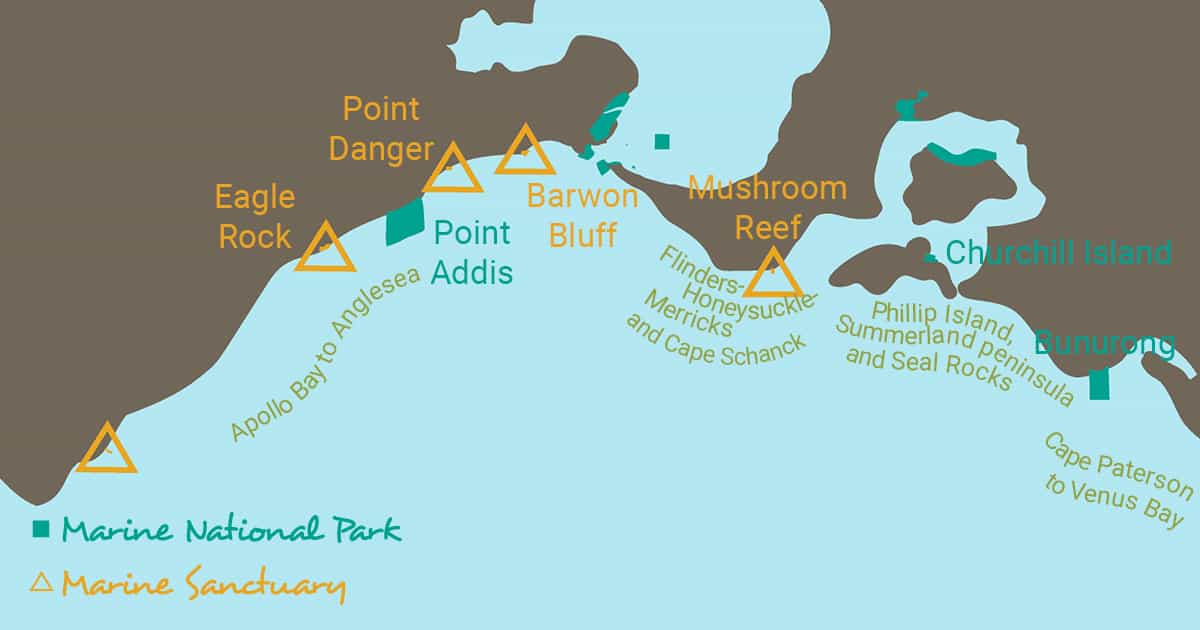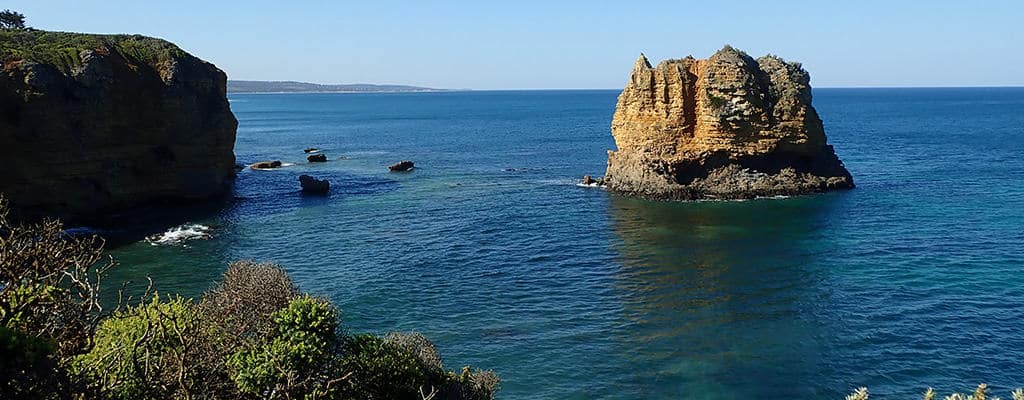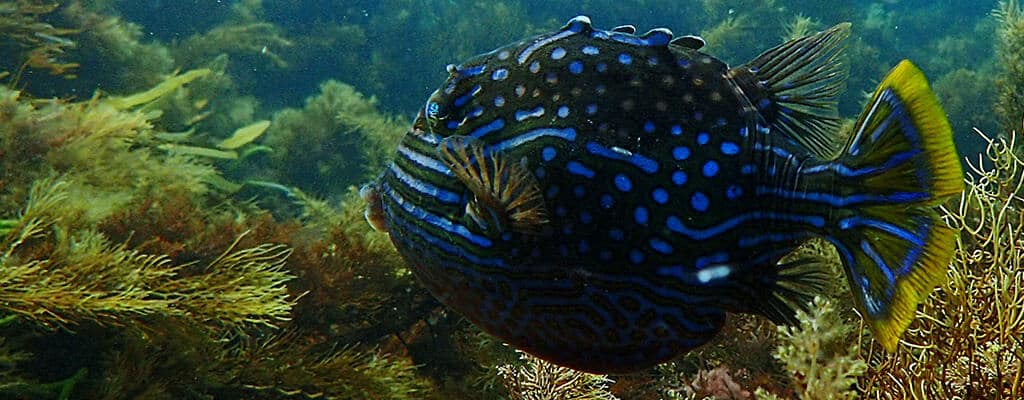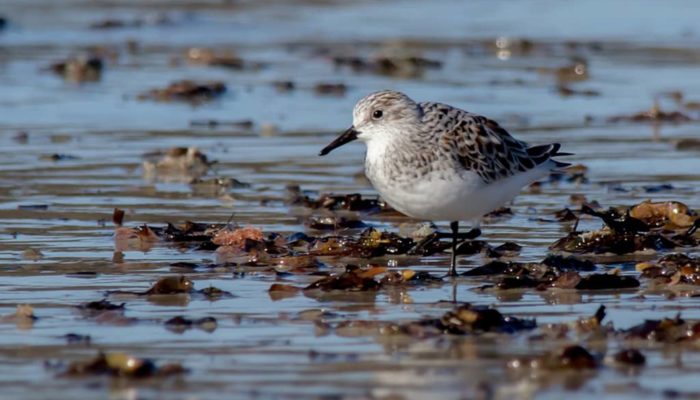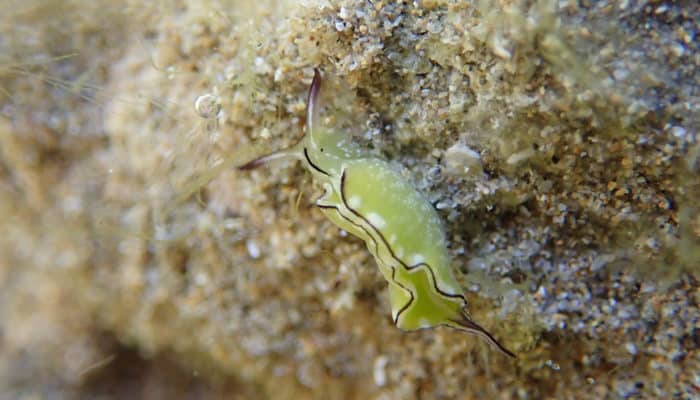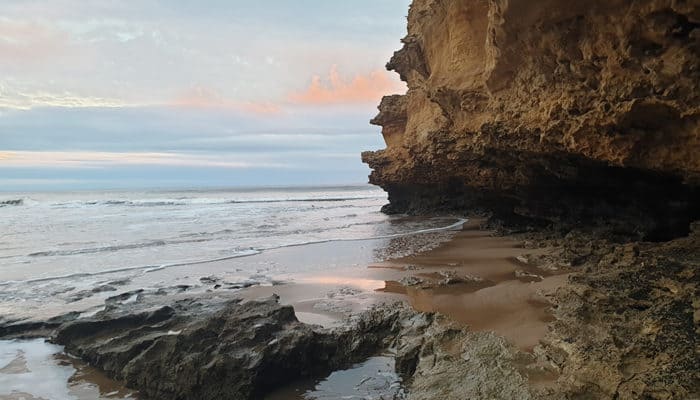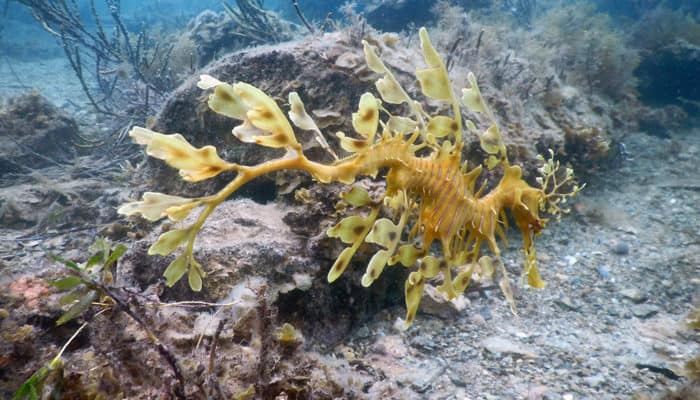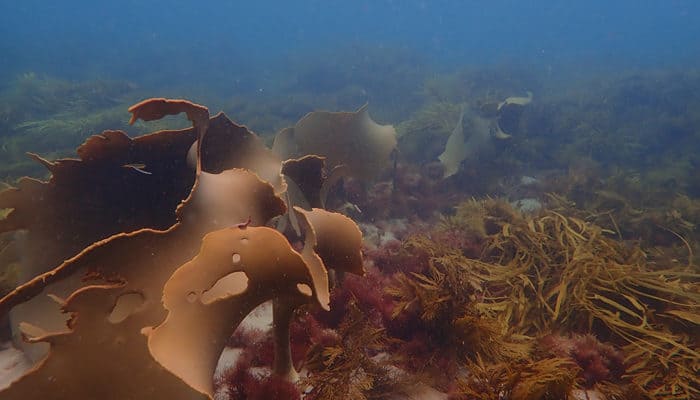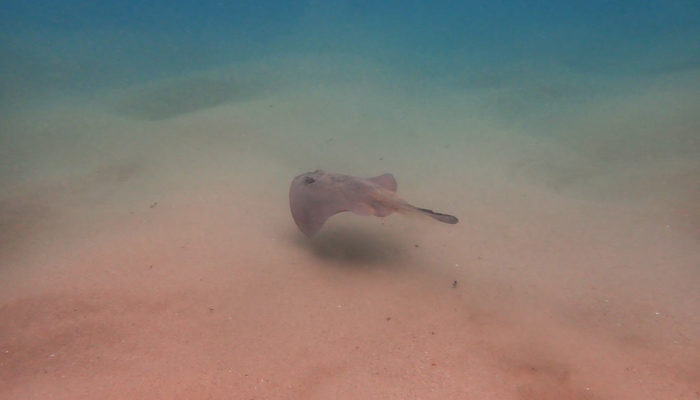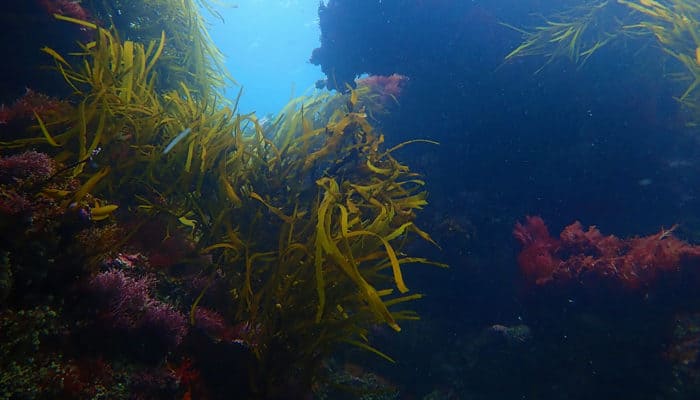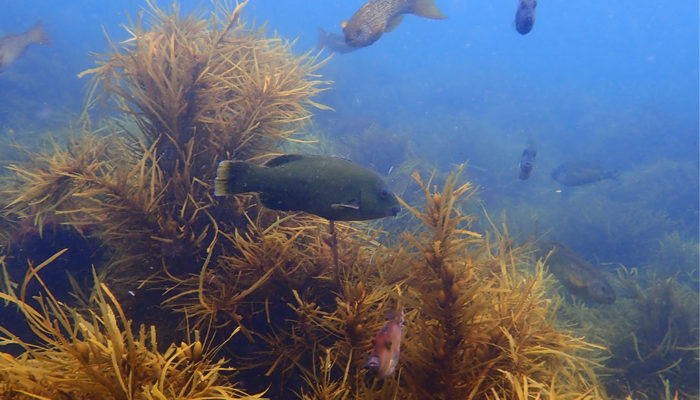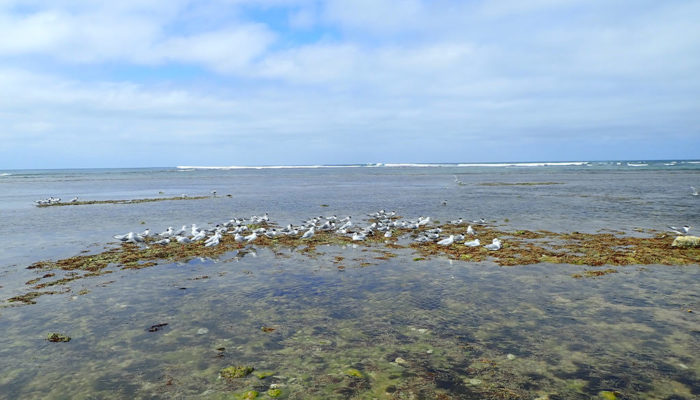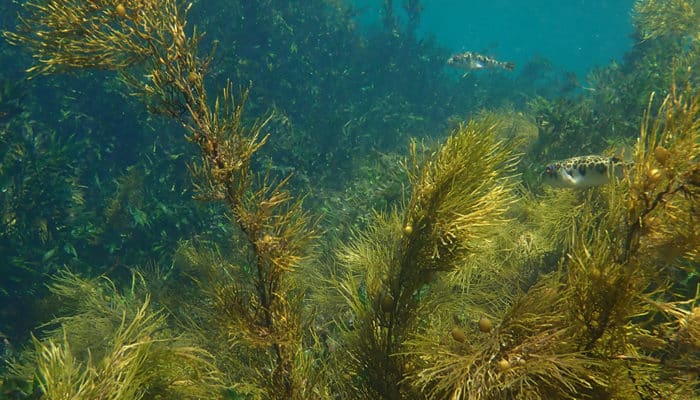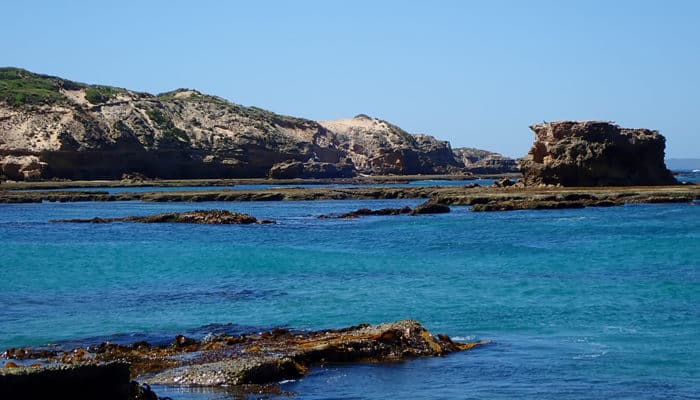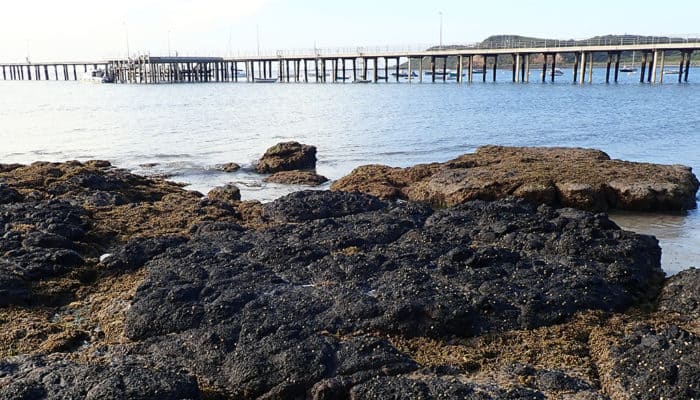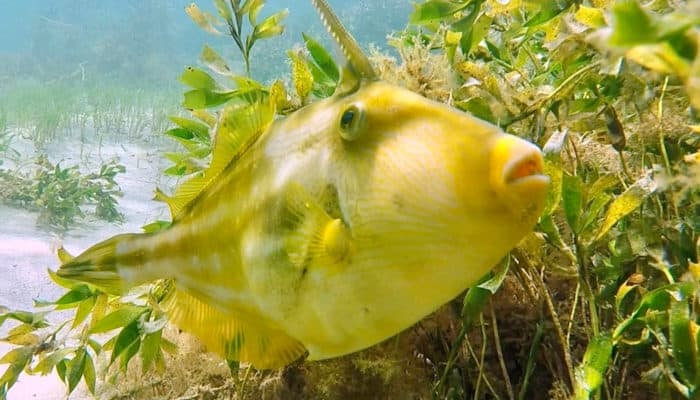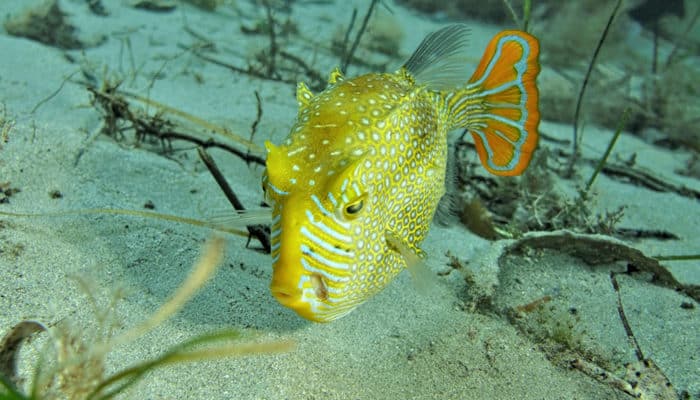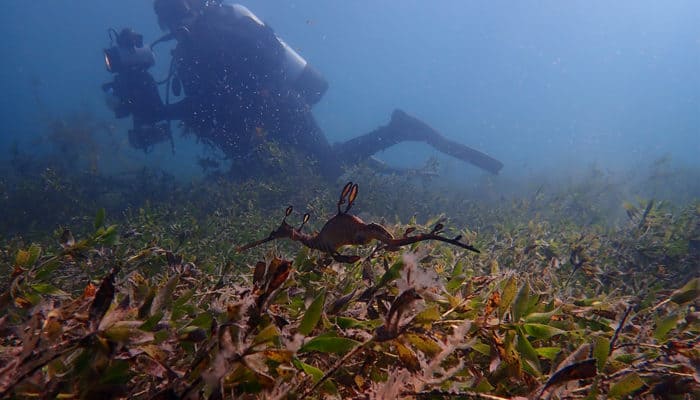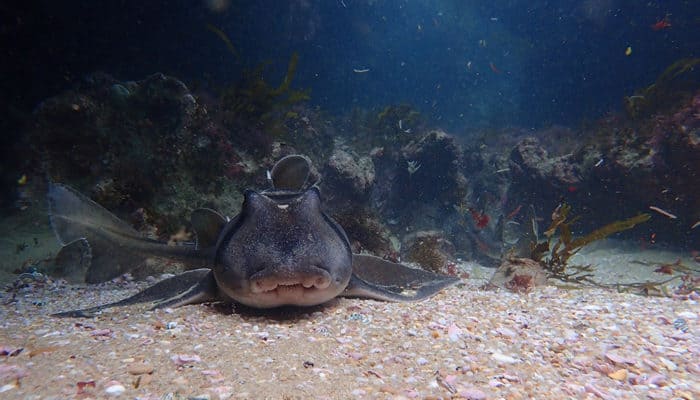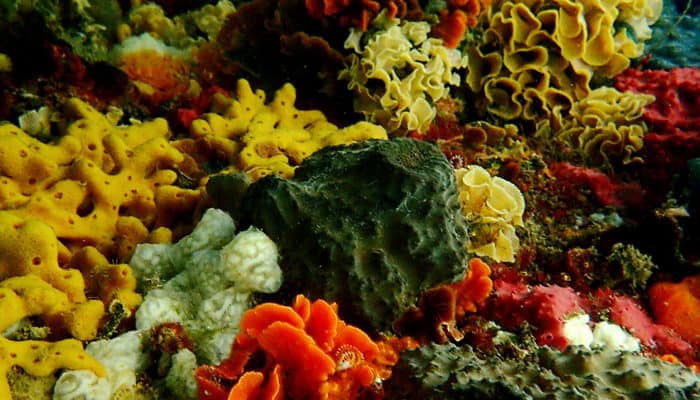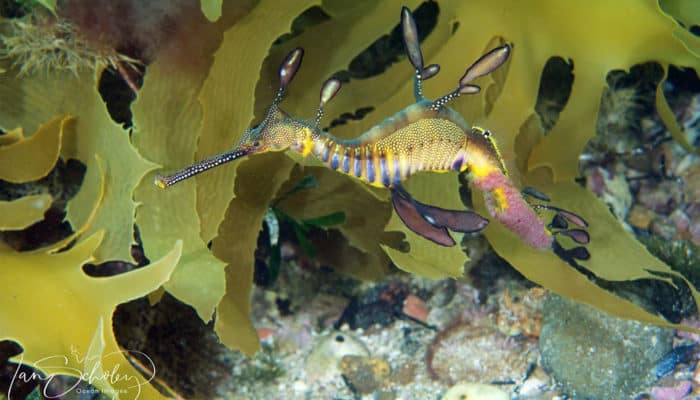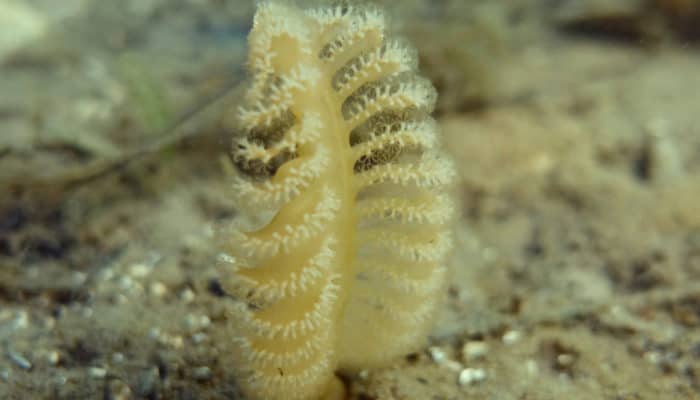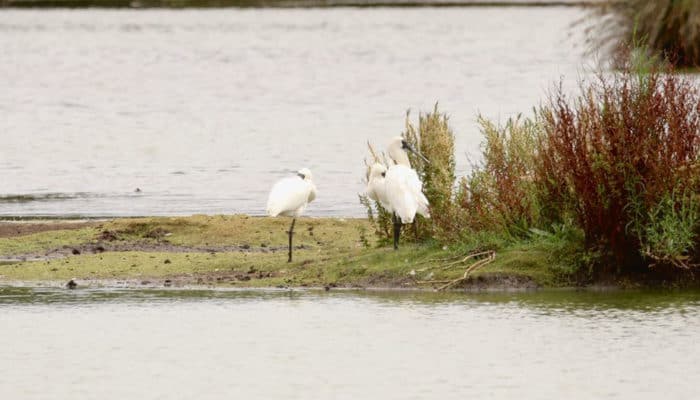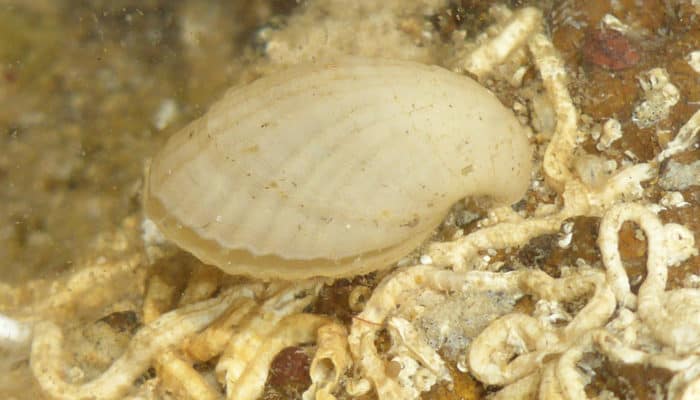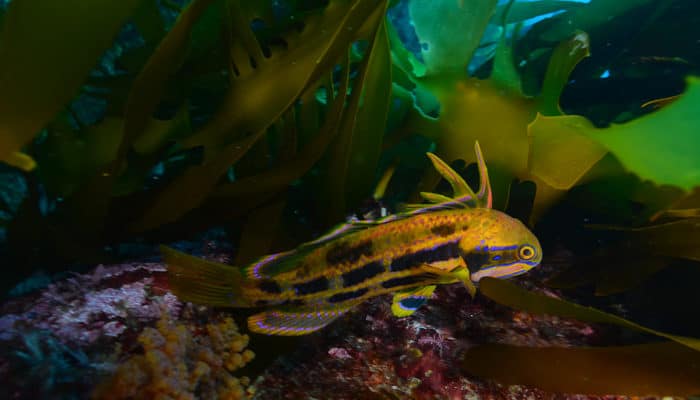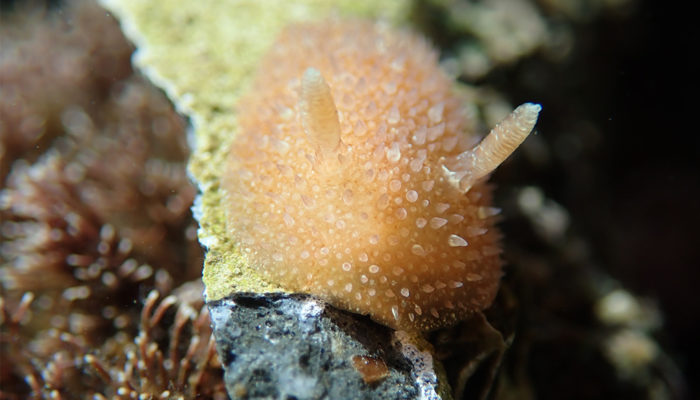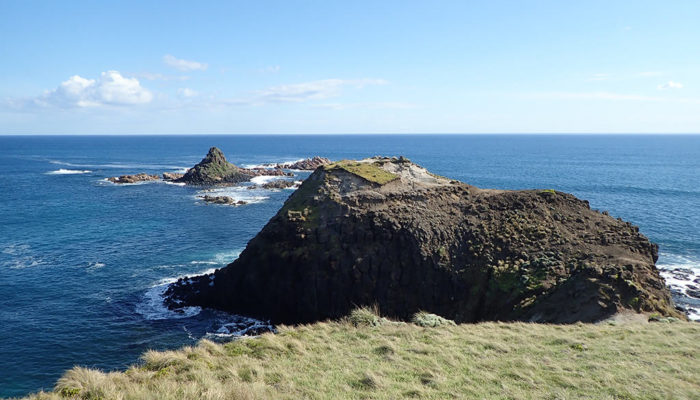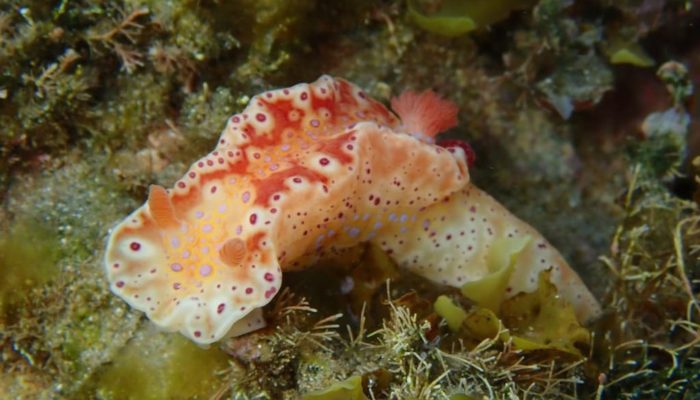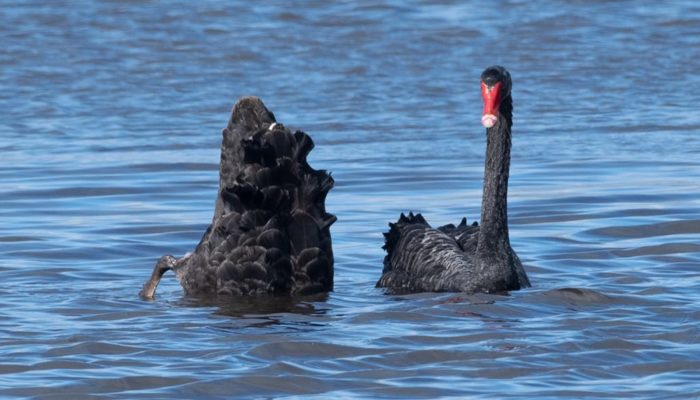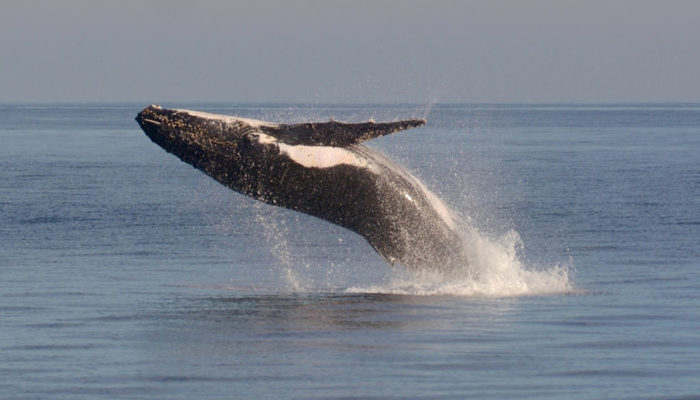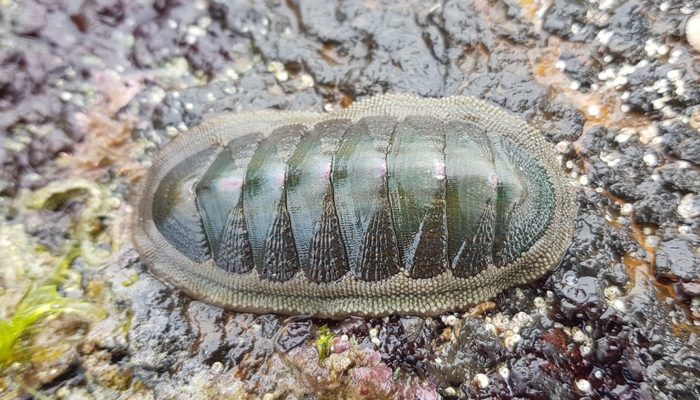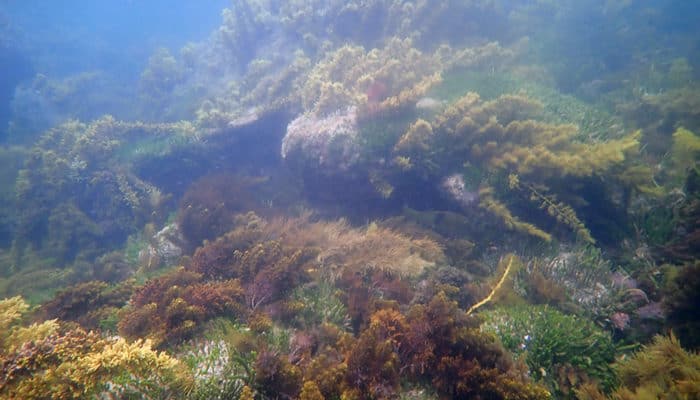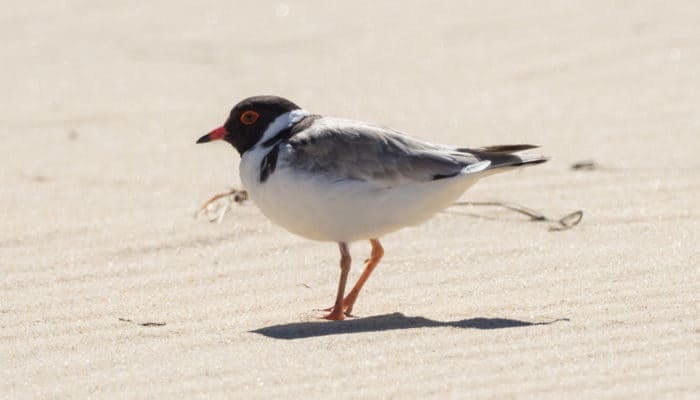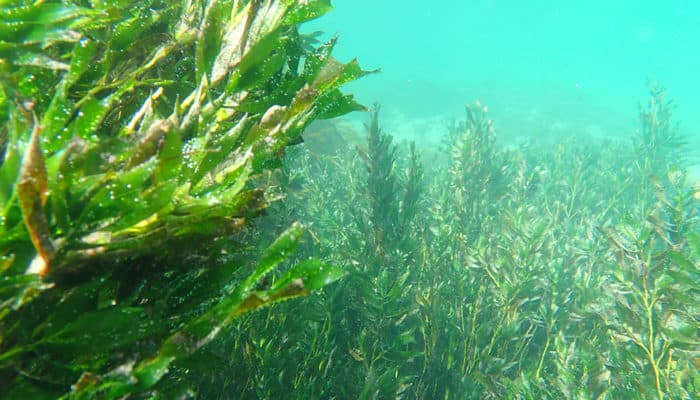Apollo Bay to Anglesea
The coastline between Apollo Bay and Lorne has spectacular landscapes and some of the world’s best surf beaches. But not everyone realises that the seascapes below the waves are equally awe-inspiring. Limestone reefs along this coast create diverse underwater habitats, including caves and fissures, home to some amazing sea organisms.
The marine environment along this stretch of Victoria’s coastline is exposed to intense wave action from the southwest. The waves shape coastal landforms as well as the animals and plants that live in the area. They nourish life in the sea, bringing much-needed food and oxygen.
Sandy beaches, underwater sandy plains and intertidal reefs are all found on this coastline. The area is a home for a range of invertebrates, fish, algae, birds and wildlife. Offshore there are many small rocky reefs. Old coastal landforms on the sea floor, such as an underwater canyon formed by the old path of the Kennett River, a lake and old shorelines, are also features of this area.
Rhodolith beds, mobile beds of spherical boulder-like objects formed by red coralline algae, cover several square kilometres in waters protected by Point Addis Marine National Park. Rhodolith beds create a diverse benthic habitat and are thought to be nursery grounds for many species. The Park is also home to large meadows of sea nymph seagrass (Amphibolis antarctica) in the sand between the reefs.
Ingoldsby Reef near Anglesea is one of the longest shallow offshore reefs in Victorian waters and is home to a diverse range of marine life, including the rare leafy seadragon (Phycodurus eques). Some 114 species of algae, as well as colourful ascidians, gorgonians, hydroids and sponges, cover the reef.
Accessible, fascinating and diverse intertidal reef is exposed at low tide. Covered with a network of small boulders, seaweed beds, crevices and pools, the wide variety of spaces in these reefs harbours a great diversity of animals under or attached to rocks, in pools, or hidden in cracks.
Beds of Neptune’s necklace (Hormosira banksii) and sea lettuce (Ulva species) blanketing intertidal rock platforms hide a diversity of invertebrate life. The highest rocks along the rocky shore may be encrusted with cyanobacteria, algae and lichens. Small gastropods, isopods and amphipods shelter under moist rocks. Keyhole limpets, crabs, mussels and barnacles are abundant, and banded brittle-stars (Ophionereis schayeri) and carnivorous worms emerge from under rocks to feed at nightly high tides.
A staggering diversity of sea slugs (including the group known as nudibranchs) is found at Point Danger. Unlike garden slugs, sea slugs appear in a range of exquisite shapes, colours and sizes. Around 20% of the 96 species of sea slugs recorded from this site have not been scientifically described.
The diverse and spectacular underwater environment of rock platforms, caves, fissures and boulder fields, and reefs of basalt and limestone with potholes, gulches, bommies and caves in this area is a habitat for a wide range of species. Kelp forests sway under the waves, and vast sponge gardens grow on the rocky reefs. In large sandy areas, sea-squirts, sponges, stinging hydroids and sea-moss are abundant, and shelter fish such as ling. Larger species like stingrays and shrimp can be found on the surface of these sandy plains, while the water-filled cavities between the sand grains are a habitat for nematodes and flatworms.
Under the waves, inshore reefs are covered in brown, red and green seaweeds, habitat for sessile (fixed) invertebrates such as sea anemones, ascidians, hydroids, sponges and echinoderms, molluscs, and polychaetes. Colonial ascidians, bryozoans, rock lobsters and abalone can be found on lower reefs. In deeper water you can find areas of large mushroom-shaped reefs, the tops of which are covered in kelps and vast sponge gardens. Urchins, sea pens and sponge-hydroid are scattered in some of the deepest waters.
The area’s abundant fish-life includes blue throat and senator wrasse (Notolabrus tetricus and Pictilabrus laticlavius), sea sweep (Scorpis aequipinnis), banded morwong (Cheilodactylus spectabilis), magpie morwong (Pseudogoniistius nigripes), southern hulafish (Trachinops caudimaculatus), leatherjackets, toadfish and stingrays. Scott’s Weedfish (Heteroclinus sp. nov) is thought to be at its westerly limit in Point Addis Marine National Park.
Behind the breaking waves on a sunny calm day, you can often see Australian fur seals (Arctocephalus pusillus doriferus) cooling themselves on the sea surface by sticking one flipper into the air. Dolphins are also common.
A breeding colony of 20 pairs of little penguins (Eudyptula minor) is present at the Apollo Bay breakwater. Along the coast of the nearby Otway National Park there have also been incidental sightings of the Fiordland penguin (Eudyptes pachyrhynchus). Other species of birds roosting in the area include the hooded plover (Thinornis rubricollis), Arctic Jaeger (Stercorarius parasiticus), Australasian gannet (Morus serrator), crested tern (Thalasseus bergii), Pacific gull (Larus pacificus), sanderling (Calidris alba) and shy albatross (Thalassarche cauta).
The Barham River Estuary is a regionally significant saltmarsh and estuary system, providing nesting, roosting and feeding habitat for many species of bird. Sandy beaches in the area are important habitat for many seabird species and inconspicuous invertebrates.
Marine Protected Areas
- Eagle Rock Marine Sanctuary
- Point Danger Marine Sanctuary
- Point Addis Marine National Park
Flinders-Honeysuckle-Merricks and Cape Schanck
The seaward coastline between Point Nepean and Cape Schanck has some of the most diverse underwater scenery and marine life in Victoria. The amazing array of creatures include the curious weedy sea-dragon, a colourful collection of fish species, crabs and sea stars, set in an equally impressive backdrop of intertidal and shallow reefs, rock pools and caverns.
This highly exposed part of Victoria’s coast has extensive lengths of intertidal reef, complex shallow reefs constantly scoured by sand and waves. The reefs have many microhabitats such as rock pools, overhanging ledges, boulders, bommies and gutters.
Vertical reef faces between the Sorrento and Rye back beaches have been significantly eroded over time, forming undercuts, caves and crevices supporting kelp beds, mixed algal habitats and marine life specially adapted to life in caverns.
From Cape Schanck to West Head (Flinders) there are extensive areas of subtidal reef with outcrops, boulders, ridges and gutters. The reefs support kelp beds. Seaweeds that grow in inshore areas under cliffs and high shores are specially adapted to the low amount of light available. Subtidal reefs in the area offer sheltered habitats and food for many fish and invertebrate species. For example, the ancient basalt Mushroom Reef Marine Sanctuary has many subtidal pools and boulders. The ancient basalt has been strongly weathered, forming microhabitats that allow marine creatures to hide under loose rocks or within crevices and cracks.
There are extensive intermediate depth reefs (15–25 m) offshore from Mornington Peninsula ocean beaches and Cape Schanck. Deeper reefs in the area consist of rubble and bedrock covered by sand washed in by waves. Red algae and sessile (non-moving) invertebrates flourish on barer reefs. Intermediate and deep reefs further offshore support amazing kelp forests and are home to a dazzling array of sessile invertebrates. Cape Schanck’s deep reefs, pinnacles and canyons support incredibly diverse communities of sedentary invertebrates like sponges, sea tulips and lace corals.
Flinders is another area of high conservation value, with important intertidal and subtidal reef and Amphibolis seagrass beds meadows. The area around Flinders Jetty is home to colonies of weedy seadragons (Phyllopteryx taeniolatus), Victoria’s marine emblem, and a number of threatened species in the intertidal reef habitats. Seagrass beds at Flinders help stabilise sediments and contribute to water quality in the area. They are also important nursery areas for commercially important juvenile fish and invertebrates.
The flat and shallow Honeysuckle Reef is within a relatively sheltered bay area and includes intertidal and subtidal reefs and a shallow pool area used extensively by schools of young fish. It is also home to a highly diverse community of marine invertebrates. Part of the beach area adjacent to Honeysuckle Reef is used as a high-tide roost by migratory wading birds.
The rocky shores and surrounding reefs at Flinders are famous for the diversity of their marine life- Mushroom Reef has the most diverse intertidal rocky reef communities in Victoria. The area has revealed many animal species not previously known to science. These include sea stars that brood their young in their stomach and other tiny sea star species once thought to be juveniles.
Crabs, colourful cushion sea stars, shells of all shapes and sizes, and rows of daisy-like anemones are all easily visible along the reefs of this coast. The seafloor in the coves is carpeted in algae and seagrass, and the gutters, ledges and boulders of the subtidal reefs are covered in kelps and smaller brown and red algae. These reefs are home to abundant rock lobster, ascidians, gorgonian fans, sponges and corals. Reef fish such as moonlighters (Tilodon sexfasciatus), magpie morwong (Pseudogoniistius nigripes), wrasses, and cartilaginous fish such as Port Jackson sharks (Heterodontus portusjacksoni) and cat sharks are also commonly seen in the area.
Sandy areas support large seagrass meadows inhabited by a variety of fish including saddled wrasse (Notolabrus fucicola), magpie morwong, and the strange box-like cowfish (Aracana ornata and Aracana aurita).
This area is also home to a number of rare and threatened invertebrates, including the snapping shrimp Alpheus australosulcatus, the chiton Bassethulia glypta and the sea cucumber Apsolidium densum. The threatened sea cucumber is a species found only in Victoria at three locations, two of which are Mushroom Reef and Honeysuckle Reef. The rare chiton has a very restricted distribution, and has only been found in the Port Phillip Heads region and at West Head (Flinders).
Despite their fierce name, seadragons are dainty, timid animals that hover slowly and gracefully over the seagrass and seaweed in which they shelter. The long flaps of skin that project along the top and bottom of the fish imitate leaves of seaweed, and this combined with their colouration can make them very difficult to see among their habitat. Their tiny fins beat rapidly, enabling them to float without obvious movement. Weedy seadragons are related to pipe fish and seahorses, although they cannot coil their tails like seahorses. But as with seahorses, it is the male that looks after the eggs. Tiny pink eggs stuck to the tail of male weedy seadragons are brooded for two months and then hatch directly into tiny fish which grow rapidly, reaching 7 cm in three weeks. Note: All seadragons, seahorses and pipefishes are protected in Victoria, and a permit is required to collect them.
Marine Protected Areas
- Mushroom Reef Marine Sanctuary
Phillip Island, Summerland Peninsula and Seal Rocks
Phillip Island is home to some of the most fascinating areas of Victoria’s marine and coastal environment, including the little penguin colony of the Summerland Peninsula, the Seal Rocks fur seal breeding colony, as well as the incredible pinnacles rising up from the deep waters south of Phillip Island.
This diverse and highly productive area includes sandy beaches, kelp habitat, mangrove pockets, saltmarsh and shallow reefs. Phillip Island is the only Victorian breeding site of the kelp gull, Larus dominicanus, and is also a breeding area for sooty oystercatchers (Haematopus fuliginosus), and muttonbirds.
Phillip Island’s deep reefs, pinnacles and canyons support incredibly diverse communities of sedentary invertebrates like sponges, sea tulips and lace corals. Reef areas here also form important kelp habitat. Kelp forests offer shelter, habitat and food to fish, sea snails, lace corals, sponges, crabs and many other species.
The southern coast of Phillip Island is subject to high wave energy and strong south-westerly winds. Strong tides, with significant rise and fall, also influence this region. The basalt coastal cliffs of Phillip Island and the Summerland Peninsula have been fractured by the strong wave action and have formed extensive intertidal platforms in the area.
Seal Rocks is home to one of Australia’s largest seal breeding colonies and is an important great white shark (Carcharodon carcharias) feeding area.
The threatened San Remo Marine Community is an intertidal and subtidal marine community with extremely rich marine life. This small area of 600 by 300 metres off the coast near the township of San Remo has incredibly high invertebrate diversity, and the only record of the sea slug Rhodope genus in Australia is from here.
Churchill Island Marine National Park is an important roosting and feeding habitat for migratory waders and shorebirds. The intertidal mud flats extending from Rhyll to Newhaven are of State significance, and the area from Rhyll Inlet to Churchill Island is of national significance as part of a group of primary foraging sites for the 32 migratory waders found in Westernport.
The area north of Churchill Island is a significant intertidal mudflat, as is much of Westernport. Seagrasses within the bay trap sediment and cause it to build up. For animals and plants to survive in this muddy environment they must have burrows to allow fresh sea water to bring oxygen to them, or have specialised parts of their bodies, such as the breathing roots or pneumatophores of mangroves, to allow them to breathe air from the surface.
Deep water channels in Westernport are home to some unusual and unique life. Sea pens, Virgularia mirabilis, are abundant in the here, and three species of ‘living fossil’ shells are abundant in the area but very restricted globally. Brachiopods (lamp shells) are found at high density in Churchill Island Marine National Park.
The quartzite ridge at Smith beach, along the southern Phillip Island coast, is a significant site and the only example of its kind in Victoria. This platform extends for 10 metres and is covered by water at most stages of the tide.
On the southern shore of Phillip Island, within Westernport, bare mud, mangroves, saltmarsh, seagrass meadows and sediment channels provide habitat for a range of important marine fish and invertebrate species. This area is part of the Westernport Ramsar wetlands. The deeper sediment channel habitats are of particular conservation importance as they support communities of sea pens and ‘fossil’ shells which are presently unmapped.
The intertidal flats of the Bass River Delta are important bird foraging and roosting sites. Important algal beds and productive seagrass meadows also flourish in the delta.
Seagrasses in the area are a major food for black swans (Cygnus atratus), which eat large amounts of the thick root-like rhizomes that run under the mud. As the seagrass passes through the swan’s body some nutrients are absorbed, but most pass out of the swan to provide food for a wide range of invertebrates. The seagrass habitats are critically important for numerous fish species as an important feeding area and nursery ground. Species known to live in seagrass habitats at different stages of their lives include leather jackets, flounder, King George whiting (Sillaginodes punctata), bream, garfish and flathead. The health of seagrasses is important in the productivity of many of our commercial and recreational fisheries.
Bottlenose dolphins visit the area and other large mammals may pass nearby.
Marine Protected Areas
- Churchill Island Marine National Park
Cape Paterson to Venus Bay
Gippsland’s Bunurong coast is full of amazing sandstone sculptures, beautiful sandy coves, rambling cliffs and prominent headlands.
Beneath the waves, an unusual set of environmental conditions have created unique marine life and communities including several marine animal and plant species that are known only from this area. The area shares the cool waters of Victoria’s central and western coasts, but unlike those shores it is relatively protected from the oceanic south-westerly swell by the position of faraway King Island. The gently sloping rocky seafloor is also unusual for Victoria.
The seaweed assemblage of the Bunurong coast is quite different from other Victorian shallow reef areas. It has a high diversity of smaller seaweed species, unlike many other Victorian shallow reefs, which tend to be dominated by larger canopy formers.
A total of 201 algal species, 87 fish species and 258 invertebrates have been identified within the Bunurong Marine National Park Several animals and plants have been recorded in Victoria only from this area, and many others are at their most easterly location here, preferring the cool waters of Victoria’s west. The coastline is well known among marine enthusiasts for its diversity of the marine grazing snails known as chitons. It is also home to a listed sea cucumber species (Pentocnus bursatus).
The sandy beaches, cliffs, dunes and coastal vegetation at Bunurong are an important habitat for shore birds, in particular the vulnerable hooded plover (Thinornis rubricollis). This is also an important feeding and breeding area for peregrine falcons (Falco peregrinus).
Seagrass beds, including the seagrass commonly known as sea nymph (Amphibolis antarctica), are important nursery areas for fish species and invertebrates, help stabilise sediments, and improve water quality.
Extensive intertidal rock platforms provide microhabitats for a high diversity of intertidal and shallow subtidal invertebrate fauna, including brittle stars, sea cucumbers, chitons, colourful sea stars, feather stars, crabs and many large seashells. Around the rocks at Eagles Nest and Twin Reefs, numerous Port Jackson sharks (Heterodontus portusjacksoni) rest under the ledges, rock lobsters fill the crevices, and zebra fish (Girella zebra), sweep and wrasse dart about the seaweed.
Marine Protected Areas
- Bunurong Marine National Park
- Bunurong Marine Park
- Cape Liptrap Coastal Park
